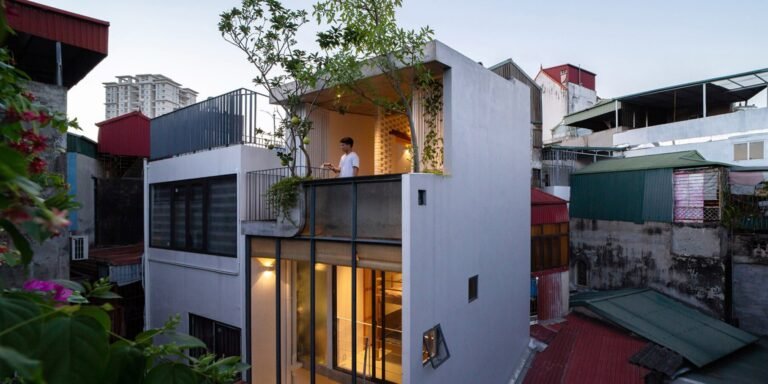office mi–ji designs ‘unquestionably small’ pavilion to sell bagels in melbourne
small yet impactful architecture
In a northern neighborhood of Melbourne, Australia, lies a small pavilion that’s making a big impression. Conceived by the architects at Office Mi–Ji in collaboration with their client, the dinky size of ‘A Pavilion’ was planned so that it can be transported to another site on an equally small truck. Described by Office Mi–Ji as ‘unquestionably small‘, the structure measures just 2.7m long, 1.5m wide, and 2.3m high.
A Pavilion was originally designed as a place to sell bagels and condiments. Situated next to an industrial unit in Collingwood, the building is currently being used for storage. The architects say it will soon sell condiments once more but without the bagels. Thanks to its transportability, it’s easy to imagine a myriad of uses for this miniature intervention.
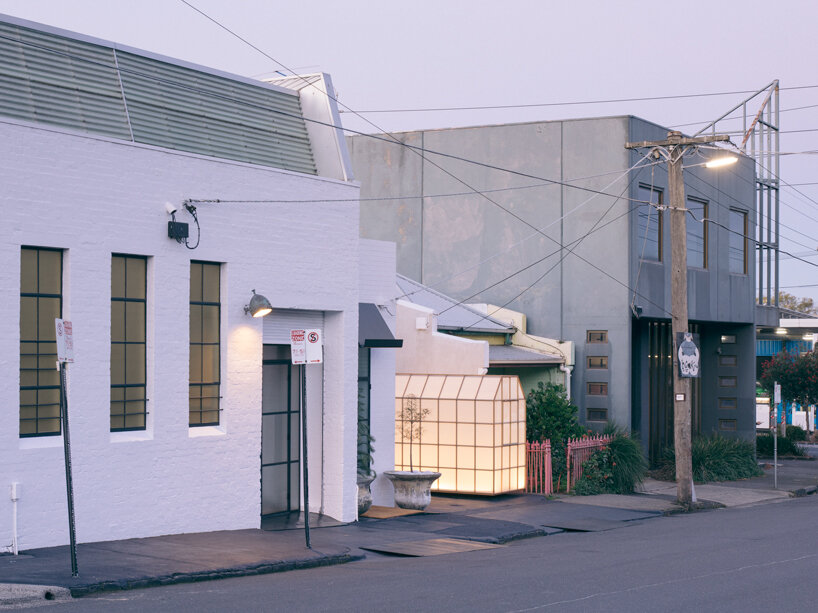
images by Ben Hosking
Office Mi–Ji’s luminescent cell
The design process began with an early sketch from the client. From there, Office Mi–Ji developed a three-directional grid of steel T-sections covered with translucent glass to encompass one singular space. The roof, which is also glass, has chamfered edges that soften the boxiness of the architecture and evoke a traditional pitched roof house.
The small space is accessed through a door at the back and there’s a square window at the front from which to sell food to passersby. The only departure from the glass finish is the timber floor inside.
Thanks to its all-glass skin, A Pavilion becomes a glowing beacon once the sun goes down—a kind of odd yet kind of wonderful addition to the Melbourne streetscape.
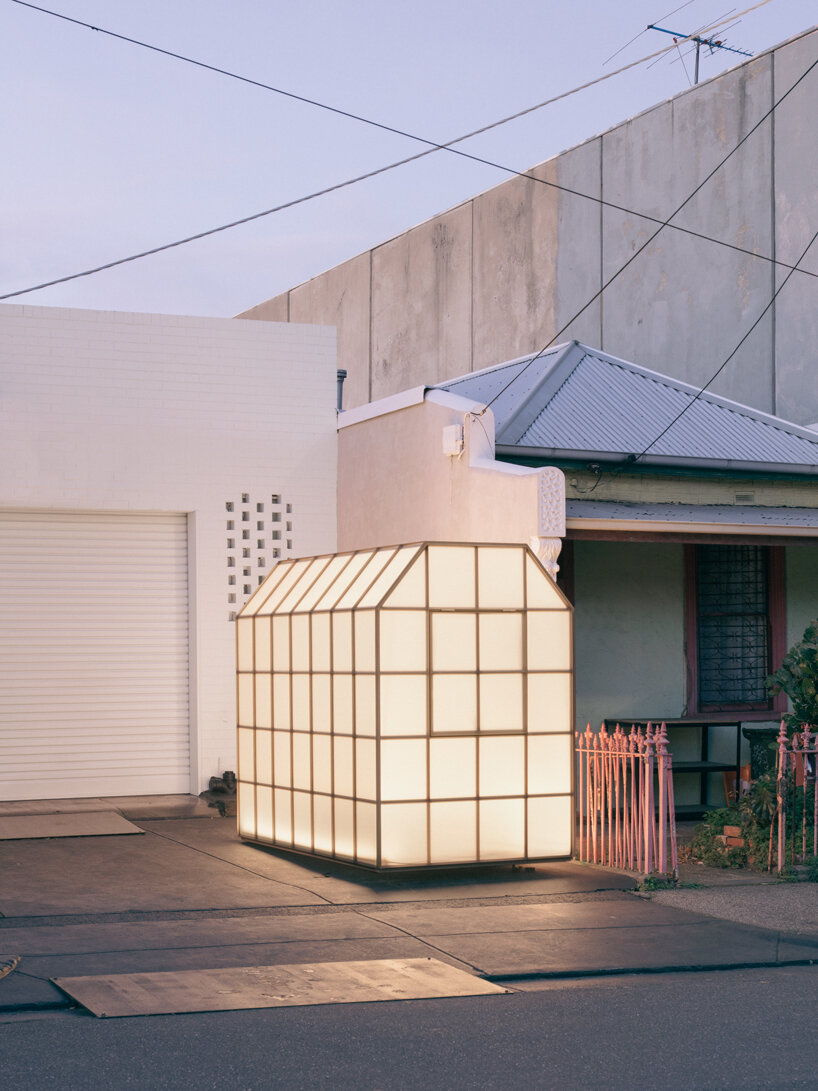
A Pavilion is currently situated outside an industrial unit in Collingwood, Melbourne
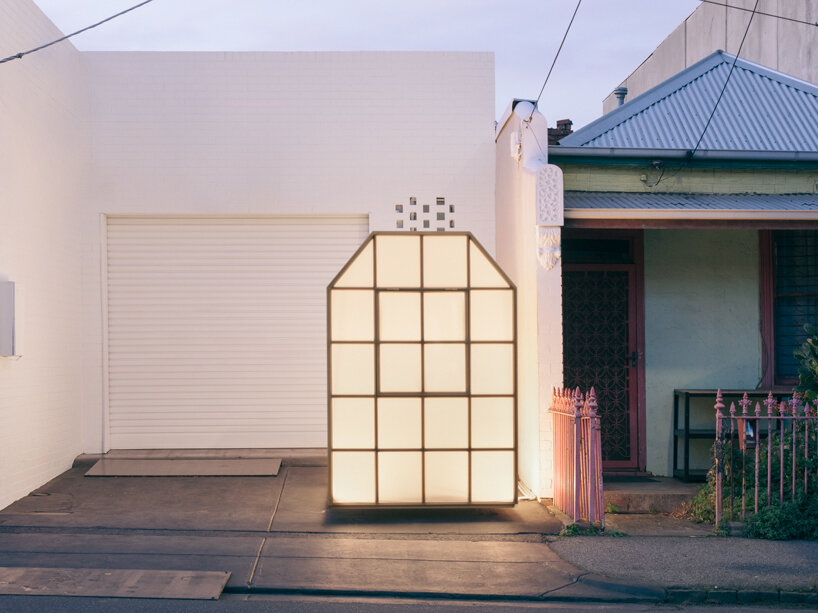
the dinky structure measures just 1.5m wide
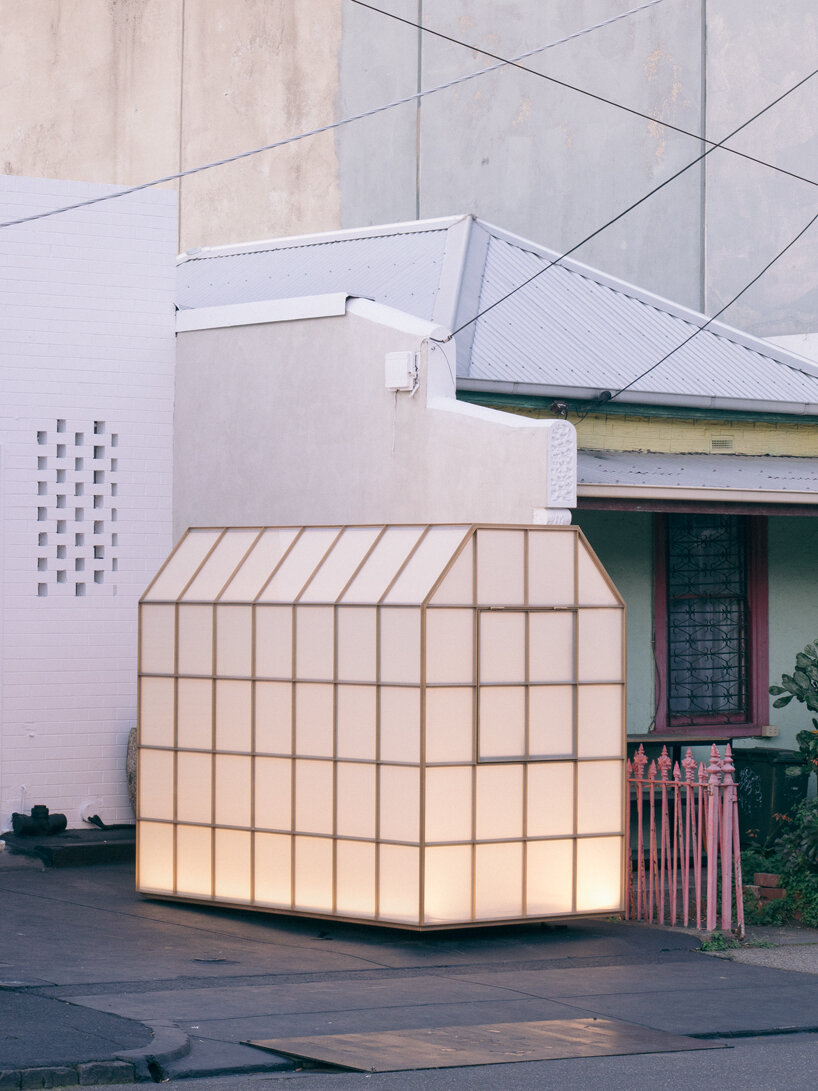
the translucent glass skin makes A Pavilion glow
project info:
name: A Pavilion
location: Collingwood, Melbourne, Australia
architecture: Office Mi–Ji in collaboration with the client
contractor: Architectural Steel Pty Ltd and Timothy Hann
year: 2021
photography: Ben Hosking

